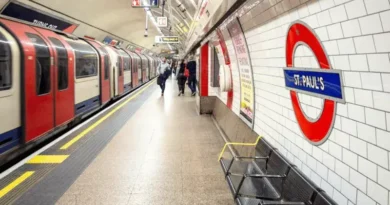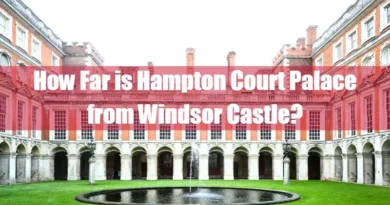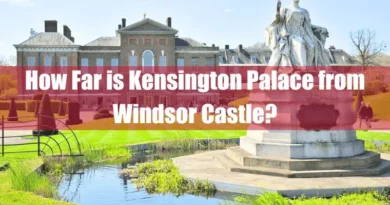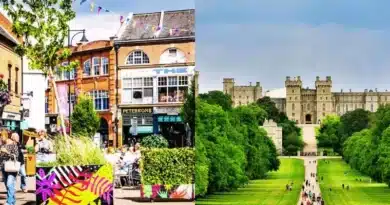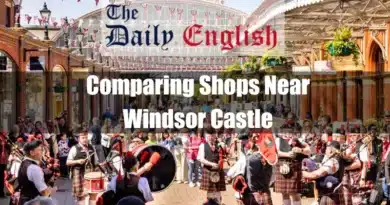Who Lived In Windsor Castle
Windsor Castle has been a royal residence for nearly a millennium, housing successive British monarchs since its construction by William the Conqueror in the 11th century. Henry I held his court at the castle as the first king to reside there. Subsequent monarchs, including Henry II, Henry III, and Edward III, expanded and enhanced the castle’s structures. Henry VIII and Elizabeth I used Windsor Castle extensively during the Tudor period. In the 19th century, Queen Victoria made it her principal residence, hosting numerous state occasions. More recently, Queen Elizabeth II spent much of her time at Windsor, particularly during the COVID-19 pandemic, and it remained her residence until she died in 2022. Today, Windsor Castle continues to serve as a royal home and a venue for state events.
Takeaways
| Key Points |
|---|
| Windsor Castle has been home to numerous monarchs since its foundation by William the Conqueror around 1070 as a defensive stronghold overlooking the River Thames. |
| Henry I was the first king to reside there, setting a precedent for its use as a royal residence, while Henry II and Henry III replaced its wooden structures with stone and constructed a palace within its grounds. |
| Edward III, born at Windsor in 1312, played a pivotal role in its history by reconstructing the castle and establishing the Order of the Garter in 1348, solidifying its ceremonial significance. |
| The Lancastrian and Yorkist rulers, including Henry IV, Henry V, and Edward IV, reinforced Windsor’s role in both military strategy and royal prestige, with Edward IV initiating the construction of St George’s Chapel in 1475. |
| The Tudor monarchs, such as Henry VII and Henry VIII, frequently resided at Windsor, hosting grand feasts and using the castle strategically, while Elizabeth I used it for diplomacy. |
| During the Stuart era, Charles I was imprisoned there before his execution, and Charles II restored its grandeur by transforming it into a baroque palace. |
| The Hanoverian period saw George III revitalising Windsor as a royal retreat, while George IV commissioned extensive renovations that enhanced its architectural splendour. |
| Queen Victoria made Windsor a central royal residence and state venue, solidifying its association with the monarchy in the modern era. |
| In the 20th century, George VI used Windsor as a refuge during World War II, and Queen Elizabeth II spent considerable time there, particularly during the COVID-19 pandemic, ensuring its continued significance as a royal residence. |
Introduction
Windsor Castle, located in Berkshire, England, is the world’s oldest and largest occupied castle. Established in the 11th century, it has served as a royal residence for nearly a millennium, embodying a rich tapestry of British history and architecture. Over the centuries, successive monarchs have left their mark on the castle, each contributing to its evolution as both a fortress and a royal home.
Early Monarchs and the Establishment of Windsor Castle
William the Conqueror: Founder of Windsor Castle
Following his victory at the Battle of Hastings in 1066, William the Conqueror sought to fortify his new realm by constructing a series of castles. Around 1070, he selected the strategic site overlooking the River Thames to build Windsor Castle, initially a motte-and-bailey structure. This location provided defence and proximity to the Saxon hunting grounds, reflecting the castle’s dual military and recreational purposes.
Henry I: The First King to Reside at Windsor
Henry I, William’s son, was the first monarch to use Windsor Castle as a royal residence. His reign marked the beginning of the castle’s transformation from a military stronghold to a royal palace, setting a precedent for future monarchs.
Plantagenet Dynasty
Henry II: Early Expansions and Developments
Henry II initiated significant modifications to Windsor Castle, replacing wooden structures with stone, thereby enhancing its durability and grandeur. These developments marked the beginning of the castle’s evolution into a more permanent royal residence.
Henry III: Significant Architectural Contributions
Henry III further advanced the castle’s transformation by constructing a luxurious royal palace within its precincts. He added a chapel and improved the defensive structures, reflecting the castle’s dual role as a fortress and royal dwelling.
Edward III: Establishment of the Order of the Garter
Edward III was born at Windsor Castle in 1312 and had a profound connection to the site. He initiated an extensive reconstruction programme, creating St George’s Hall and establishing the Order of the Garter in 1348, England’s highest order of chivalry. These developments cemented Windsor’s status as a central venue for ceremonial events.

Lancastrian and Yorkist Monarchs
Henry IV: Seizure of Windsor During His Coup
In 1399, Henry IV seized the throne from Richard II, a coup that included taking control of strategic locations like Windsor Castle. His occupation of the castle underscored its importance as both a military stronghold and a symbol of royal authority.
Henry V: Hosting of the Holy Roman Emperor in 1417
Henry V utilised Windsor Castle as a venue for significant diplomatic events, notably hosting the Holy Roman Emperor Sigismund in 1417. This event highlighted the castle’s role in international diplomacy during the medieval period.
Henry VI: Birth at Windsor and Subsequent Reign
Henry VI was born at Windsor Castle in 1421, marking the site as his birthplace. His reign was tumultuous, characterised by the Wars of the Roses, during which the castle’s strategic importance was accentuated.
Edward IV: Initiation of St George’s Chapel Construction
Edward IV commenced the construction of St George’s Chapel in 1475, a masterpiece of Perpendicular Gothic architecture. The chapel became a spiritual centre for the Order of the Garter and a burial site for monarchs, enhancing Windsor’s religious and cultural significance.
Richard III: Brief Association with Windsor
Richard III’s association with Windsor Castle was brief, as his short reign from 1483 to 1485 focused on other royal residences. However, the castle remained a significant symbol of monarchical power during his tenure.
Windsor Castle evolved from a defensive fortress into a symbol of royal authority and tradition throughout these periods. Each monarch’s contributions have left an indelible mark on its architecture and history, reflecting the changing dynamics of English royalty.

Tudor Monarchs
Henry VII: Regular Use and Hosting of Grand Feasts
Henry VII, the first Tudor monarch, used Windsor Castle significantly, reinforcing its status as a royal residence. In 1488, he hosted a grand feast for the Order of the Garter at the castle, underscoring its importance in royal ceremonies. Henry VII also completed the roof of St George’s Chapel and initiated the conversion of the eastern Lady Chapel into a proposed shrine for Henry VI, reflecting his dedication to enhancing the castle’s religious significance.
Henry VIII: Frequent Residence and Strategic Use During Uprisings
Henry VIII had a strong connection to Windsor Castle, frequently residing there and utilising it as a strategic stronghold during periods of unrest. His reign saw the castle serve both as a royal retreat and a defensive bastion, reflecting its dual military and domestic roles.
Edward VI: Disinterest in Windsor and Simplification of Ceremonies
Henry VIII’s son, Edward VI, showed limited interest in Windsor Castle, preferring other royal residences. His reign marked a simplification of court ceremonies, leading to a decline in the elaborate functions previously held at Windsor.
Mary I: Limited Association with Windsor
Mary I’s association with Windsor Castle was minimal. Her reign did not focus on the castle; it saw little royal activity during this period.
Elizabeth I: Enjoyment of Windsor and Use for Diplomatic Engagements
Elizabeth I enjoyed Windsor Castle and used it for diplomatic engagements. Her reign saw the castle serve as a venue for hosting foreign dignitaries and conducting state affairs, reflecting its significance in royal diplomacy.

Stuart Monarchs
James I: Utilisation of Windsor Primarily for Hunting
James I utilised Windsor Castle primarily as a hunting lodge, taking advantage of the surrounding forests. His reign saw the castle’s use shift towards leisure activities, reflecting his personal interests.
Charles I: Artistic Patronage and Imprisonment at Windsor
Charles I was a notable arts patron and used Windsor Castle to display his extensive art collection. However, during the English Civil War, he was imprisoned at the castle before his execution in 1649, marking a tumultuous period in the castle’s history.
Charles II: Restoration of Windsor as a Principal Residence
Following the restoration of the monarchy in 1660, Charles II sought to re-establish Windsor Castle as a principal royal residence. He initiated extensive renovations, transforming the castle into a baroque palace, and established the Long Walk, enhancing its grandeur.
James II: Limited Association with Windsor
James II had limited association with Windsor Castle, as his short reign was marked by political turmoil leading to the Glorious Revolution. Consequently, the castle saw minimal royal activity during his tenure.
Throughout the Tudor and Stuart periods, Windsor Castle’s role evolved with each monarch, reflecting their personal preferences and the political climate of their reigns. From hosting grand feasts to serving as a prison, the castle’s history during these eras showcases its adaptability and enduring significance in British royal history.
Hanoverian Monarchs
George I and George II: Preference for Other Royal Residences
During the early 18th century, both George I and his son, George II, preferred other royal residences over Windsor Castle. They favoured Hampton Court and Kensington Palace, leading to a period when the royal family seldom occupied Windsor. This lack of royal presence transformed the castle into a destination for the public, who were granted access to its state apartments.
George III: Revitalisation of Windsor’s Prominence
George III, ascending the throne in 1760, sought a retreat from the political life of London and found Windsor Castle to be the ideal sanctuary. His affection for the castle led to significant renovations, including modernising interiors and establishing the Royal Lodge within Windsor Great Park. Under his patronage, Windsor became a familial residence, reflecting his desire for domestic stability.
George IV: Extensive Renovations and Enhancements
George IV, known for his extravagant tastes, embarked on an ambitious project to transform Windsor Castle into a symbol of royal splendour. He commissioned architect Jeffry Wyatville to redesign the castle, resulting in the addition of grand state apartments and the restructuring of the Round Tower. These enhancements elevated Windsor’s status, aligning it with the grandeur of European palaces.
William IV: Residence and Death at Windsor
William IV, brother and successor to George IV, continued to use Windsor Castle as a royal residence. A more restrained approach marked his tenure at the castle compared to his predecessor’s opulence. William IV passed away at Windsor Castle on 20 June 1837 and was subsequently interred in St George’s Chapel within the castle grounds.

Victorian Era
Queen Victoria: Frequent Residence and Hosting of State Events
Queen Victoria held Windsor Castle in high esteem, making it one of her principal residences. She utilised the castle not only as a family home but also as a venue for state occasions and diplomatic engagements. Windsor became synonymous with the British monarchy’s domestic life during her reign, hosting numerous events reinforcing its status as a centre of royal activity.
Throughout the Hanoverian and Victorian eras, Windsor Castle experienced fluctuations in royal favour, ranging from periods of neglect to times of revitalisation and grandeur. Each monarch’s personal preferences and initiatives significantly influenced the castle’s role and status within the British monarchy.
20th Century Monarchs
Edward VII: Modernisation of Windsor’s Interiors
Upon ascending the throne in 1901, King Edward VII initiated a series of modernisations at Windsor Castle to align it with contemporary tastes and technological advancements. His efforts included updating the castle’s interiors, introducing modern amenities, and redecorating various rooms to reflect the Edwardian style. These enhancements ensured that Windsor Castle remained a functional and comfortable royal residence in the early 20th century.
George V: Continuation of Enhancements
King George V, who reigned from 1910 to 1936, continued the modernisation efforts at Windsor Castle. He maintained the castle’s status as a principal royal residence, overseeing further updates to its infrastructure and interiors. His reign ensured that Windsor Castle remained a symbol of stability and continuity for the British monarchy during a period marked by significant social and political changes.
Edward VIII: Brief Reign with Limited Association
King Edward VIII’s reign in 1936 was notably brief, lasting less than a year due to his abdication. During this short period, his association with Windsor Castle was minimal, and no significant events or changes related to the castle occurred under his tenure.
George VI: Use of Windsor During World War II
King George VI, who ascended the throne in 1936, utilised Windsor Castle as a refuge during World War II. The castle served as a safe haven for the royal family, including the young Princesses Elizabeth and Margaret, away from the bombing raids on London. This period reinforced Windsor Castle’s role as a sanctuary and symbol of resilience for the nation.
Contemporary Era
Queen Elizabeth II: Regular Use and Residence During the COVID-19 Pandemic
Queen Elizabeth II held Windsor Castle in high regard, frequently residing there during weekends and official engagements. During the COVID-19 pandemic, the Queen chose Windsor Castle as her primary residence, conducting virtual audiences and engagements from within its walls. This period highlighted the castle’s adaptability and continued importance as a working royal residence.
King Charles III: Current Association with Windsor
As of March 2025, King Charles III maintains a strong association with Windsor Castle. The castle continues to serve as a venue for state functions, official receptions, and personal retreats for the King. Its enduring significance reflects the continuity of royal tradition and the castle’s role in the modern monarchy.
Conclusion
Windsor Castle’s rich history is intricately linked with the British monarchy, serving as a royal residence for nearly a millennium. From its origins under William the Conqueror to its current role under King Charles III, the castle has evolved alongside the monarchy, adapting to successive sovereigns’ changing needs and preferences. Its enduring presence stands as a testament to the resilience and continuity of the British royal tradition.
FAQ
Who was the first monarch to reside in Windsor Castle?
King Henry I was the first monarch to use Windsor Castle as a residence. He held his court there and, in 1121, celebrated his marriage to Adeliza of Louvain within its walls.
Did William the Conqueror live in Windsor Castle?
No, William the Conqueror commissioned the construction of Windsor Castle around 1070, but he did not reside there. The castle was initially built as a defensive fortress rather than a royal residence.
Which monarch transformed Windsor Castle into a grand royal palace?
King Edward III transformed Windsor Castle into a grand Gothic palace during the 14th century, establishing it as a significant royal residence.
Did Henry VIII live in Windsor Castle?
Yes, King Henry VIII frequently resided at Windsor Castle. He used it as a retreat and a base for hunting in Windsor Forest.
Which monarch was imprisoned in Windsor Castle during the English Civil War?
King Charles I was held as a prisoner in Windsor Castle before his execution in 1649.
Did Queen Victoria make Windsor Castle her home?
Yes, Queen Victoria made Windsor Castle her principal residence, spending much of her time there, especially after the death of her husband, Prince Albert.
Who was the first monarch to be buried in St. George’s Chapel at Windsor Castle?
King Edward IV was the first monarch interred in St. George’s Chapel in 1483.
Did Queen Elizabeth II live in Windsor Castle?
Yes, Queen Elizabeth II used Windsor Castle as one of her official residences, often spending weekends there.
Which monarch established the Order of the Garter at Windsor Castle?
King Edward III founded the Order of the Garter, England’s highest order of chivalry, at Windsor Castle in 1348.
Did any non-royal figures reside in Windsor Castle?
Yes, various non-royal individuals, such as courtiers and officials, have resided within Windsor Castle’s grounds over the centuries.
Which monarch was born at Windsor Castle?
Windsor Castle has been the birthplace of two English monarchs: King Edward III, born on 13 November 1312, and King Henry VI, born on 6 December 1421. These births underscore the castle’s longstanding significance as a royal residence.
Did George III reside in Windsor Castle during his reign?
Yes, King George III made Windsor Castle one of his primary residences and undertook significant renovations during his reign.
Which monarch rebuilt parts of Windsor Castle in the Gothic style?
King George IV initiated extensive renovations of Windsor Castle in the Gothic style during the early 19th century.
Did any royal weddings take place at Windsor Castle?
Yes, numerous royal weddings have occurred at Windsor Castle, including the marriage of Prince Harry and Meghan Markle in 2018.
Which monarch used Windsor Castle as a refuge during World War II?
King George VI and his family, including the future Queen Elizabeth II, used Windsor Castle as a refuge during World War II.
Did Prince Philip reside at Windsor Castle?
Yes, Prince Philip, Duke of Edinburgh, resided at Windsor Castle alongside Queen Elizabeth II during their marriage.
Which monarch established the Royal Archives at Windsor Castle?
King George V established the Royal Archives at Windsor Castle in 1914 to preserve historical documents.
Did any monarchs die at Windsor Castle?
Yes, several monarchs, including King George V and King George VI, passed away at Windsor Castle.
Which monarch commissioned the construction of the Round Tower at Windsor Castle?
King Henry II commissioned the construction of the Round Tower in the 12th century, enhancing the castle’s defences.
Does the British monarch currently inhabit Windsor Castle?
Yes, Windsor Castle remains one of the official residences of the British monarch and is currently inhabited by King Charles III.




